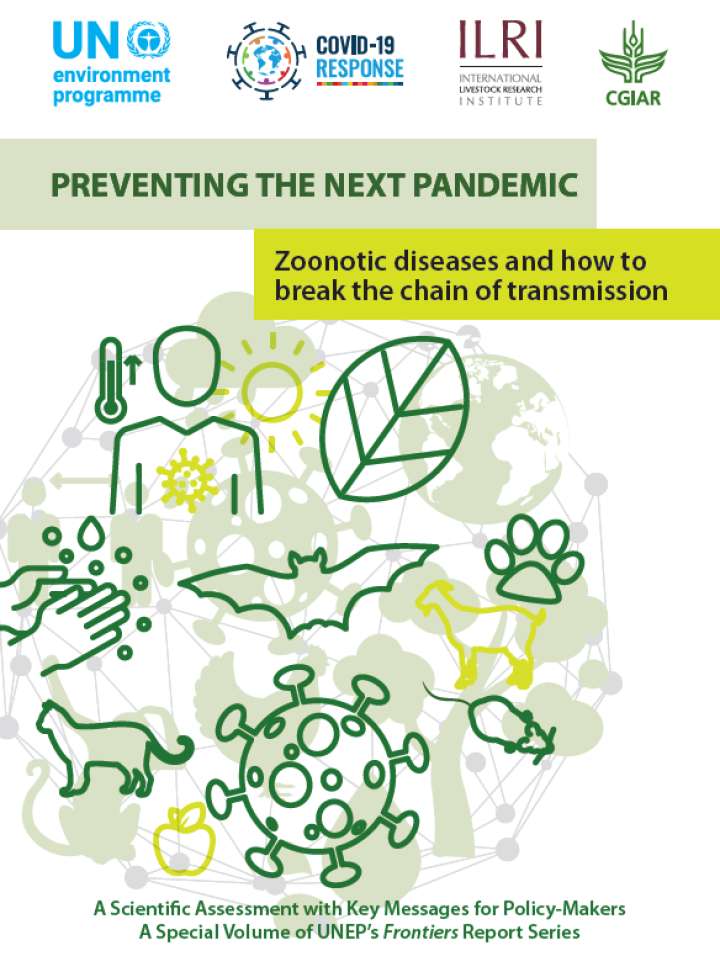Preventing the next pandemic - Zoonotic diseases and how to break the chain of transmission
Most papers and guidelines about COVID-19 consider the important questions of how to respond to the ongoing public health crisis, or how to mitigate the impacts of the pandemic. This report takes a step back and considers the root causes of the emergence and spread of the novel coronavirus and other ‘zoonoses’ - diseases that are transmitted between animals and humans.
The report also offers a set of practical recommendations that can help policymakers prevent and respond to future disease outbreaks (p. 53):
- Raise awareness and increase understanding (knowledge) of zoonotic and emerging disease risks and prevention (where appropriate), at all levels of society to build widespread support for risk-reduction strategies;
- Increase investments in interdisciplinary approaches including the One Health perspective; strengthen the integration of environmental considerations in the World Health Organization (WHO)/Food and Agriculture Organization (FAO)/World Organisation for Animal Health (OIE) Tripartite Collaboration;
- Expand scientific enquiry into the complex social, economic and ecological dimensions of emerging diseases, including zoonoses, to assess risks and develop interventions at the interface of the environment, animal health and human health;
- Improve cost-benefit analyses of emerging diseases prevention interventions to include full-cost accounting of societal impacts of a disease so as to optimize investments and reduce trade-offs;
- Develop effective means of monitoring and regulating practices associated with zoonotic disease, including food systems from farm to fork and improving sanitary measures, taking into account the nutritional, cultural and socio-economic benefits of these food systems;
- Include health considerations in incentives for (sustainable) food systems, including wildlife source foods;
- Identify key drivers of emerging diseases in animal husbandry, both in industrialized agriculture (intensive husbandry systems) and smallholder production;
- Support integrated management of landscapes and seascapes that enhance sustainable co-existence of agriculture and wildlife, including through investment in agro-ecological methods of food production that mitigate waste and pollution while reducing risk of zoonotic disease transmission;
- Strengthen existing and build new capacities among health stakeholders in all countries to improve outcomes and to help them understand the human, animal and environment health dimensions of zoonotic and other diseases;
- Adequately mainstream and implement the One Health approach in land-use and sustainable development planning, implementation and monitoring, among other fields.
Explore further
